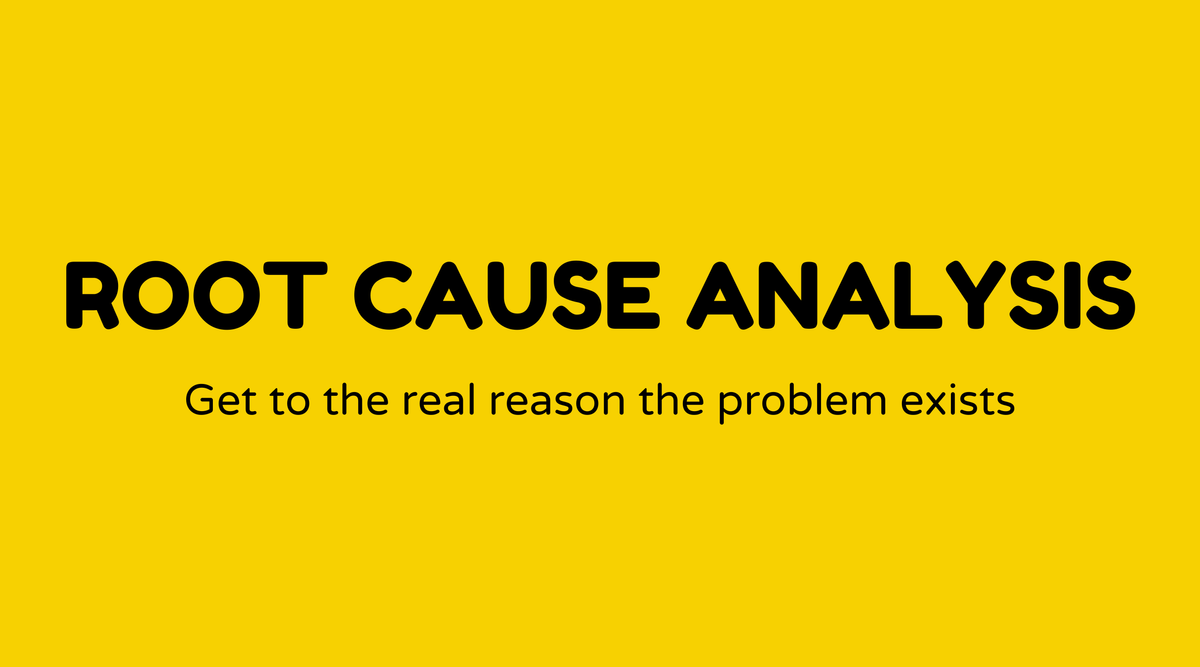Root cause analysis

Overview of Root Cause Analysis
Root cause analysis (RCA) is an effective method used to pinpoint the primary cause of a fault or problem. It delves into the actual issue rather than merely addressing the symptoms. This technique is commonly applied in fields such as IT, manufacturing, and healthcare because it reveals underlying issues and helps prevent future mistakes.
Why Root Cause Analysis Matters
Have you ever attempted to fix something, only for it to break again? That can be frustrating! That's where RCA proves useful. Understanding the root cause decreases the likelihood of recurrence. Additionally, it conserves resources and time – a beneficial outcome! It nurtures a culture of ongoing improvement. For businesses, this strategy leads to enhanced efficiency and, subsequently, better-quality outcomes.
What is Root Cause Analysis?
Root Cause Analysis focuses on investigating the matter until reaching its core. It involves meticulous detective work to untangle persistent problems. Instead of merely noting a surface issue, RCA strives to address the underlying cause. The process typically includes gathering data, analyzing patterns, and pinpointing the origin of the issue. Think of it as playing Sherlock Holmes, but for operational challenges.
How Do You Do Root Cause Analysis?
To accurately identify the root cause, a systematic approach is most effective:
- Define the Problem: Start by understanding the issue at hand. Be as precise as you can.
- Collect Data: Gather all relevant information about the problem. Interviews, reports, logs—everything is fair game.
- Identify Possible Causes: Brainstorm possible causes based on the collected information.
- Determine Root Cause: Use techniques like the "5 Whys" or fishbone diagram to connect the dots and find the real issue.
- Implement Solutions: Once identified, it’s time to resolve the problem. Create and execute a plan.
- Evaluate: Check if it’s working. If it’s not effective, adjust the solution until it achieves the desired result.
Sample Agenda for a Root Cause Analysis Workshop
A workshop immerses participants in RCA methodologies right away. Here’s an engaging sample agenda:
- Introduction (10 min): Overview, goals, and significance of RCA.
- Defining the Problem (20 min): Divide attendees into groups to practice defining issues.
- Data Collection (30 min): Discuss and gather data examples.
- Brainstorming Session (40 min): List all potential causes.
- Root Cause Techniques (30 min): Introduce models like "5 Whys" and fishbone diagram.
- Solution Development (30 min): Groups create solutions for their identified causes.
- Feedback and Evaluation (20 min): Present findings for peer feedback.
Examples of Root Cause Analysis
Here are a few notable examples:
- Toyota Production System: They are systematically known for using '5 Whys' to facilitate continuous improvement.
- Healthcare: Employed in patient safety to analyze medical errors for future prevention.
- IT Troubleshooting: Frequently utilized to identify disruptions like system downtimes or failures.
FAQs
What are common tools used in Root Cause Analysis?
- Tools such as the Pareto Chart, Fishbone Diagram, and 5 Whys are frequently used.
Is Root Cause Analysis a one-time process?
- No, it’s an ongoing process to effectively manage recurring issues.
Can Root Cause Analysis be used in small businesses?
- Definitely! Small businesses can gain significantly by streamlining processes and minimizing wasted resources.
How does Root Cause Analysis differ from CAPA?
- RCA identifies the 'cause,' whereas CAPA (Corrective and Preventive Actions) focuses on remedies for the identified cause.
Why are visual aids used in Root Cause Analysis?
- Visual aids clarify complex information, making relationships more apparent and easier to comprehend.
Do Root Cause Analysis findings always lead to a single root cause?
- Not always. Occasionally, multiple factors contribute to one problem.



